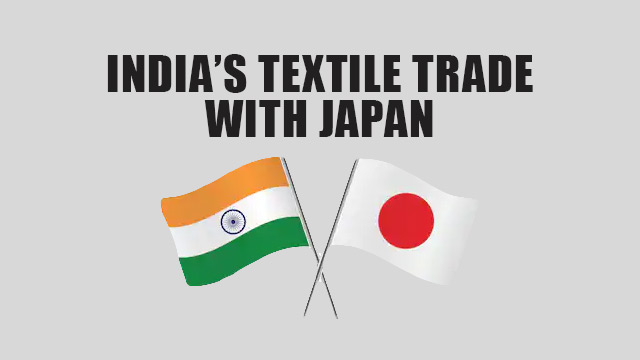In our EcoAgri Policy Diary, today will talk about Indian Textile Industry which is next to Agriculture. It is plays very important role in Indian economy. India is one of the important cotton production country in the world. This is the second largest sector after agriculture in Indian context. It has a good manufacturing base for cotton, and cotton based knitwear. India has a lot of opportunity in cotton export. Among all Japan is the important country in cotton trade for India. Japan is the third biggest apparel importer in the world, imports apparels worth of USD 24 billion. China is the main supplier of textiles to Japan along with Italy, Vietnam, South Korea, and US. India’s share in Japanese market is negligible not only in textile sector but in other areas too. Recently, there is positive change in trade activities between two countries, trade relations have been improved. Since Japan has security pact with India that will help to improve trade. Japan can be big the market for Indian textile and apparel makers. Indian firms are also focusing in developing partnership with Japanese firms to gain access into their fabric, and apparel market.
Comprehensive Economic Partnership Agreement (CEPA) with Japan: Since India’s export share with Japan is negligible and in order to improve trade tie with Japan, India has signed a Comprehensive Economic Partnership Agreement (CEPA) with Japan. The main objective was to facilitate Japan to import garments from India at zero duty. Indian exporters need to improve their quality, and keep up with timely delivery to capture the Japanese apparel market.
Market Shift: Recently, China is facing some challenges in low-cost apparel manufacturing sector that affects on their export performance. Due to political and economic reasons, Japanese companies are shifting their focus form Chinese market.
Export issues with Japan: The following are the export issues with Japan.
Non-tariff barriers issues with Japan:
- Non originating material weight is very low in clothing material (inner lining).
- Quality of the apparel exports.
- Quality testing as per Japanese labs.
- Non originating exports should not exceed 7% of weight.
Possible Policy Interventions:
- Increase in quality and productivity
- Change ISO testing methodology with Japanese testing labs.
- Clothing materials weight (inner lining) which is very low needs to be reviewed.
- Promote Korean investment in development of Korean Textile sector in Gujarat.
- Attract Korean buyers from chines market since cost of production of Indian textile is low as compare to China.
Since Japan is the big market for Indian textile industry, it needs to develop strategies which will help to improve export performance with Japan. India has competitive advantage in textile sector because India can handle whole textile value chain effectively due its traditional knowledge and competency. Indian garments have acquire duty free access into Japan. India needs to address issues like productivity, soaring cotton, yarn prices, and taxes. It will help India to get global apparel buyers.
Dr. Parashram J. Patil (Post Doc, Ph.D.,M.Com, A.D.R., CS*.)
Agricultural Export Policy Consultant
Ministry of Commerce and Industry, Govt of India.
(The views expressed are the author's own and do not necessarily reflect the position of the organisation)

